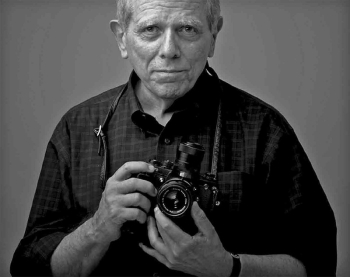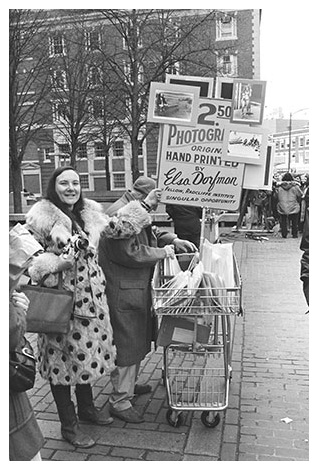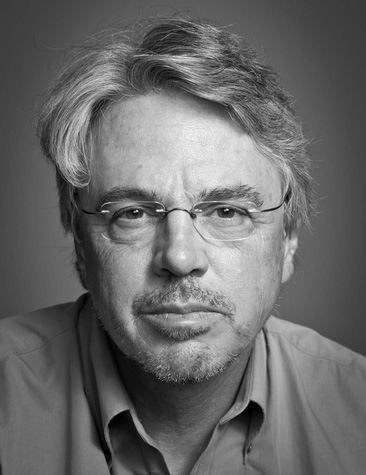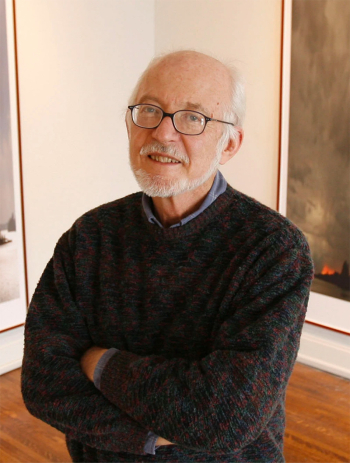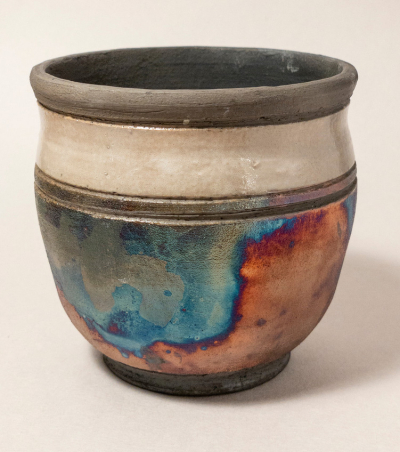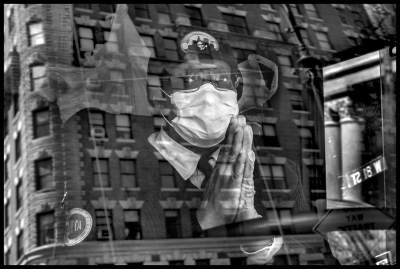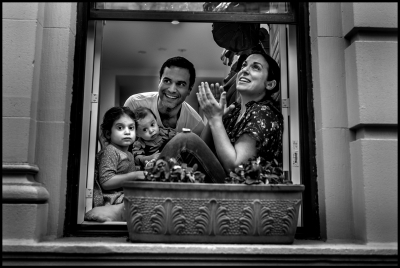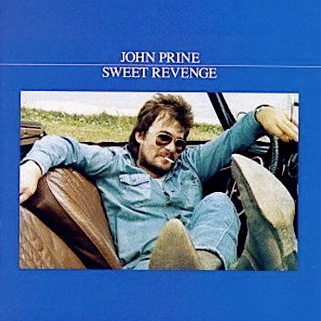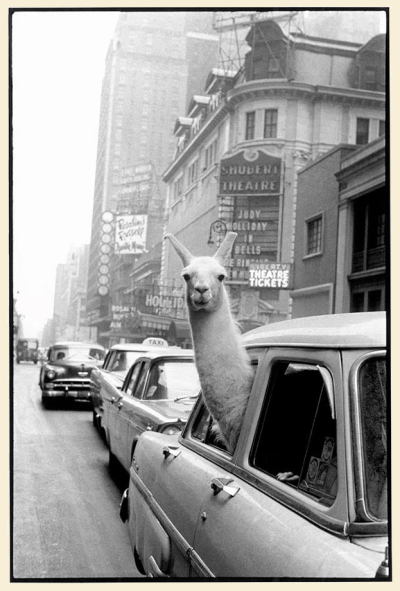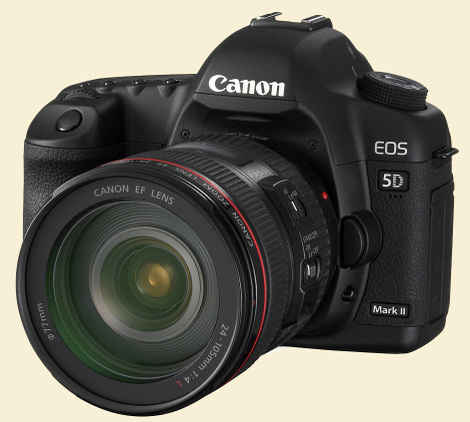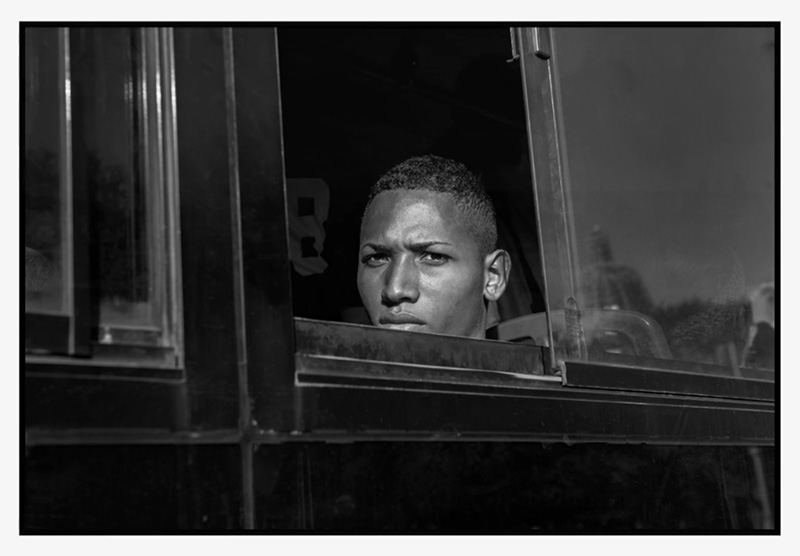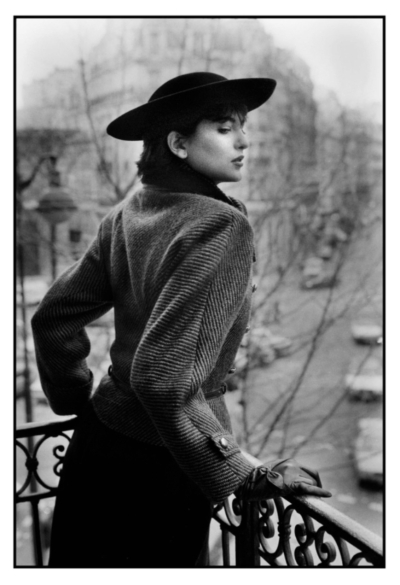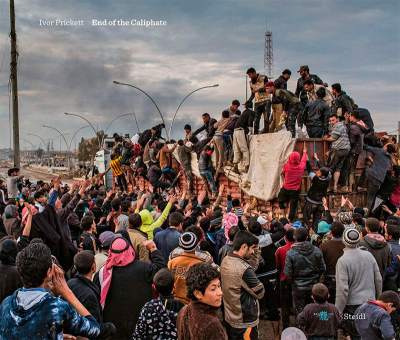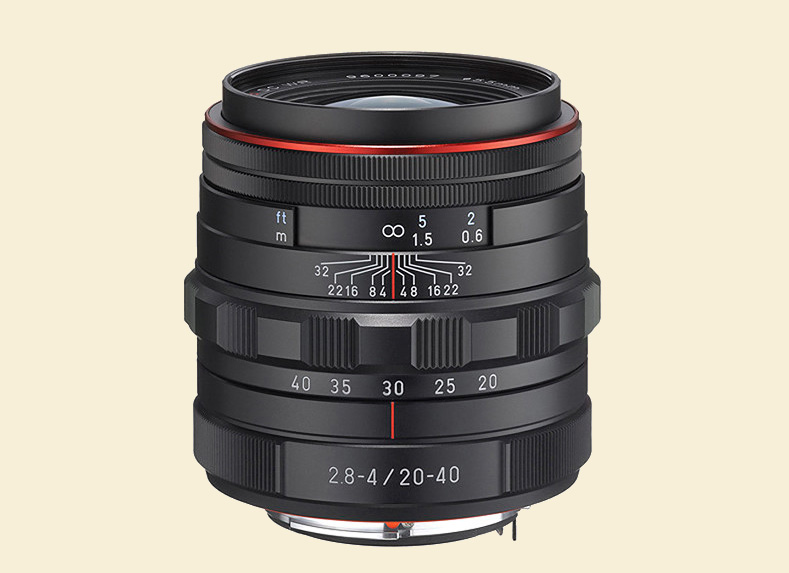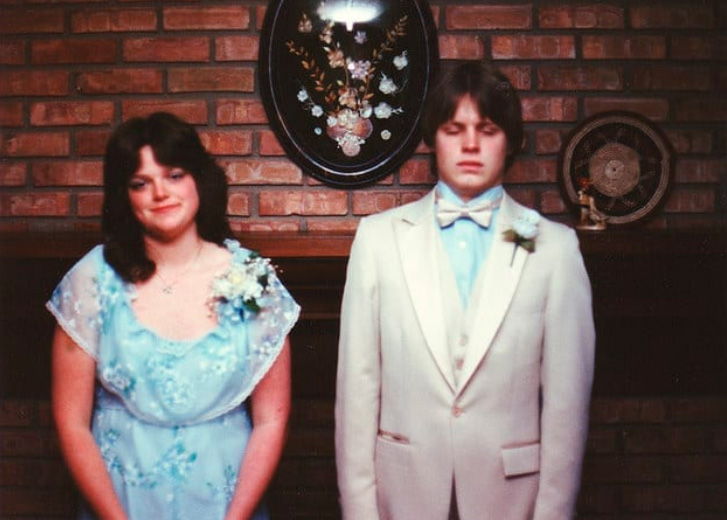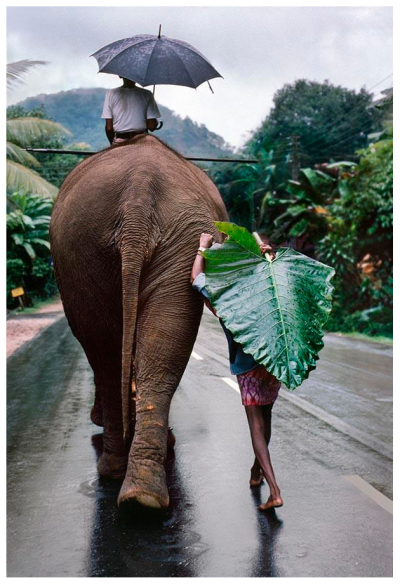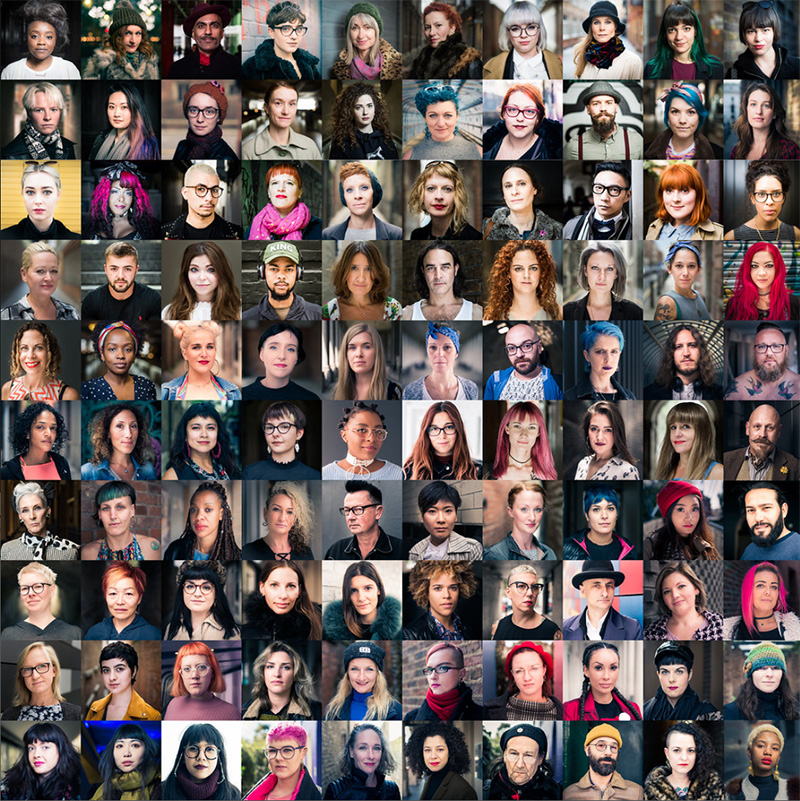 Photos by Iain Blake
Photos by Iain Blake
Iain Blake's 100 Strangers: We were talking a couple of weeks ago about approaching strangers on the street to make their portraits with their knowledge and consent. If that honorable old idea (current paragons include Scott Schuman and Brandon Stanton) appeals to you, you really must not miss Round 3 of Iain Blake's 100 Strangers project. (A comment turned me on to this at the time.) Really not much to add, but I felt joy clicking through this collection on Flickr. I found myself thinking entirely about the people and not about the photography. Fascinating work.
Supernatural Metro: Canadian photographer Christopher Herwig has a new book out called Soviet Metro Stations. From the description: "'For us,' said Soviet leader Nikita Khrushchev in his memoirs, 'there was something supernatural about the Metro.' Visiting any of the dozen or so Metro networks built across the Soviet Union between the 1930s and 1980s, it is easy to see why. Rather than the straightforward systems of London, Paris or New York, these networks were used as a propaganda artwork―a fusion of sculpture, architecture and art that combined Byzantine, medieval, baroque and constructivist ideas...." News to me. I don't know about you, but I'd look at the book just based on that paragraph. This book isn't on the photographer's website, but you can see plenty of examples of photographs from his weird and wonderful book Soviet Bus Stops Volume II there. Apparently Volume I was a bestseller, and no wonder.
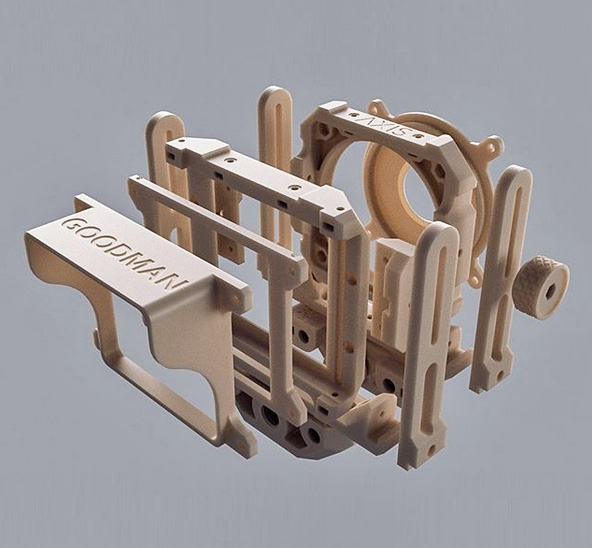 Goodman Lab Axis, as seen on Instagram
Goodman Lab Axis, as seen on Instagram
Dora Goodman of Goodman Lab is becoming increasingly well known for creating imaginative open-source 3D-printed film cameras which she documents on Instagram and on the Goodman Lab website. Not only can you 3D-print one of her cameras yourself, you can tweak the design to your liking and share it with the community—"create devices we always wished existed" indeed. There's a nice interview at Lomography.com.
You've probably already heard that Jony Ive—love him or not, one of the most influential industrial designers of the present epoch—is leaving Apple. The event is not as epochal as it might seem at first blush; Ive will continue to act as a consultant to Apple, and Apple will be one of the main clients of his new company, to be called LoveFrom. There's a summary of the shift at NBC News and also probably 1,001 other places on the Web.
That mysterious red room: A recent TV show called Stranger Things is described in an article at Business Insider as "a delightful re-creation of 1980s small town America." I don't own a TV, but I bet I'd like it. However, apparently there were some scenes that mystified some of the show's audience. "What is the purpose of this 'red room' in Stranger Things?" a post on the forum StackExchange asked. "We frequently see Jonathan go inside this to 'refine' his photos or something. I don't quite understand what happens here. He puts the photo in water, and somehow this makes it more clear? An example is in the first season when he refines Barbara's photo and sees a little bit of the Demogorgon. Is this an old film technique, and if so what is it called?" Ostensibly it made some people feel "impossibly old" that others no longer recognize a darkroom, but that fact seemed perfectly logical, and the viewer's question seemed perfectly reasonable, to me. Darkrooms are careening toward being historical at a frantic speed, and if you don't know what something is, you ask. Ignorance isn't shameful, necessarily; there are lots of things I don't know—for instance, exactly what a Demogorgon is and what its purpose might be in 1980s small town America.
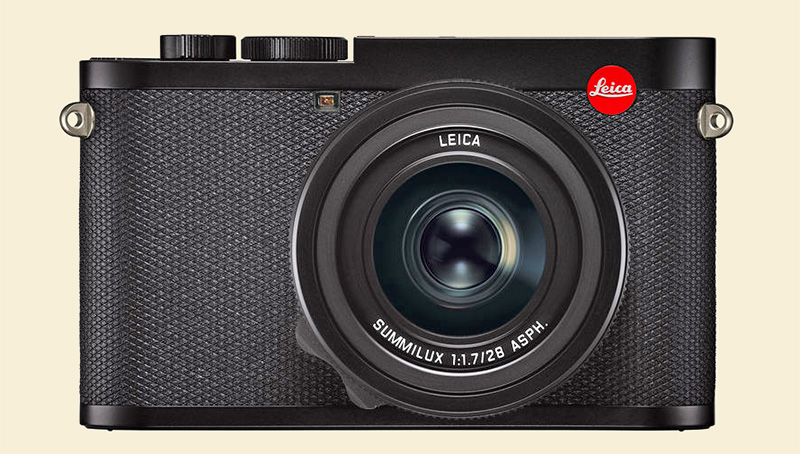
The in-demand Leica Q2
The Most Desirable Camera on the Planet, Q4 2019, is the Leica Q2. Everyone and his uncle wants one, and really, what else do you need? I don't quite understand why, with the new super-high-res cameras, it hasn't become a "thing" to take small segments of larger captures and print them as pictures in their own right. Unless you're compulsive about "getting every pixel," 8- or 10-MP segments of this 47.3MP sensor would work fine for printing up to respectable sizes. This would go beyond "cropping," because it's not just trimming, it's the extraction of small pictures hidden in much larger ones. I've been doing that just for myself, just for fun, for twenty years now. Hmm, pixel-peeping as art?
There's a book called Instant that you might have heard of—it's gotten glowing reviews since it came out. Chronicling the fabulous and fascinating story of Polaroid, it's pure fun as a mashup of photo history and technological progress, with pictures. If you've never seen the author's sub-five-minute promo video for it, you need to. Edwin Land's predictions of the future in the middle of the video are, in the words of my friend Steve, "prescient beyond belief."
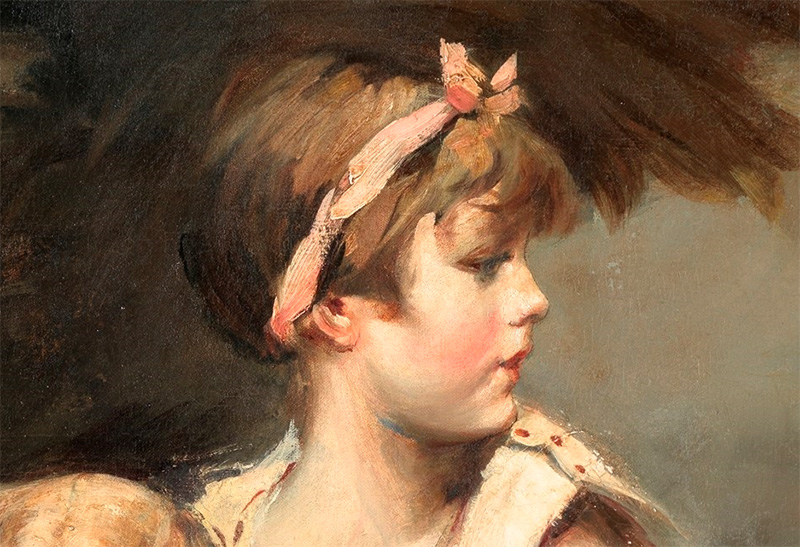
Lino Selvatico (Italian, 1872–1924), Girl with dog
("The two friends"), 1917 (detail)
In case you still think you need yet more resolution, perhaps you haven't been looking at enough paintings. Heck, not only can I not see the individual threads of the headband here, I can't even see the girl's individual hair strands. The fact is, strange as it may seem lately, visual impressions can still be made perfectly effectively in the absence of microdetail. Take that, forums everywhere.
You've no doubt encountered the term "BSI sensor." Wonder what that means? Ever since a fellow geek tried to impress upon me that I needed to know how the accelerators in B&W film developers work on a chemical level, I've been of the opinion that we don't need to know how the magic in our cameras happens. What's crucial is that we understand the practical visual effects that we and our viewers can see, and only in that context do the details make a difference. But in case you're curious about what backside-illuminated sensors are, Patrick McDonough of national digital back specialists CommercialPhoto has written a clear, brief primer called "BSI Sensors Demystified."
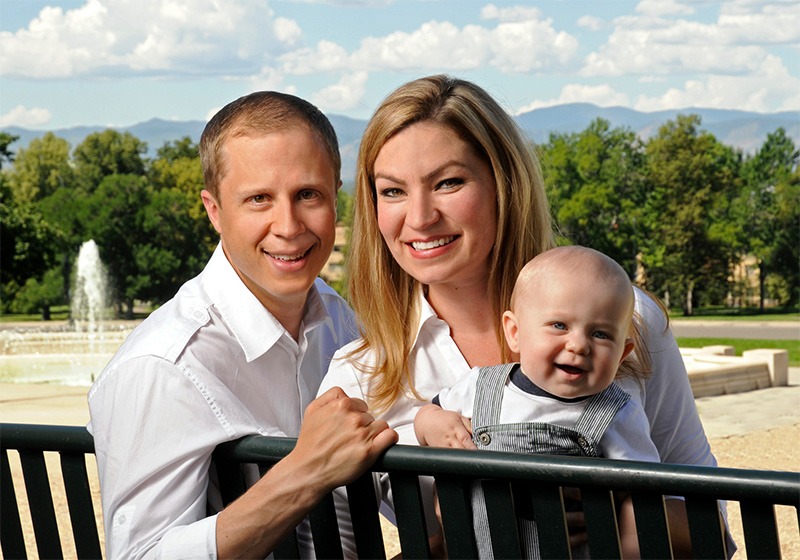
Got 'im smilin'! Nice modern-style semi-formal family
portrait by Larry Laszlo of Denver, Colorado.
Sarah Neumann writes a blog called The Charlie Neumann Chronicles "detailing the journey of two new parents, a little boy named Charlie and a Pug named Penny. Pretty simple stuff." She recently asked her friend, photographer Larry Laszlo of CoMedia Studio in Denver, Colorado, an accomplished studio and assignment pro, to take a family portrait. Little Charlie, however, had other plans. He proved remarkably uncooperative, but through no fault of his own—he was teething. Mom's samples of the amusing outtakes are published in a post called "First Family Portrait and the Toothless Old Man." Anybody been there, done that? Pro that he is, Larry got the goods in the face of...well, the face, but you gotta feel for all concerned. Funny in a wry, warm-hearted way.
Mike
(Thanks to numerous readers and friends)
Original contents copyright 2019 by Michael C. Johnston and/or the bylined author. All Rights Reserved. Links in this post may be to our affiliates; sales through affiliate links may benefit this site.
Amazon.com • Amazon UK • Amazon Canada
Amazon Germany • B&H Photo • Adorama
(To see all the comments, click on the "Comments" link below.)
Featured Comments from:
kirk Tuck: "Re: 'The Most Desirable Camera on the Planet....' I laughed so hard coffee almost came shooting out of my nose. A fixed lens point and shoot with a wide angle lens permanently stuck to the front? Now, if Leica has made this camera with a nice 50mm instead, then you would have sucked me into believing your obvious hyperbole. But a 28mm? That's a focal length for people who just can't make up their minds about what should be in their photographs!"
Peter Wright: "'Soviet Bus Stops Volume II.' With a title like that, how could I possibly resist?? My order was placed immediately! (Through your link of course.) I am looking forward to being able to say to my friends casually, 'What books are you reading? I've just finished Soviet Bus Stops, Volume Two myself.'
"As to the Leica Q2, of course it's a most desirable camera! The concept of using multiple lenses of different focal lengths (or a zoom lens) springs from the ancient limitation of the 35mm film negative. Back in the day, (grandad Tuck's day that is 😉) it was immediately obvious (and still is) whether an 8x10 print had been made using 35mm film or medium format, so those of us who liked the small format had to do everything possible to avoid any additional loss of image quality, if we didn't want to mocked by the MF toting crowd. That meant (among other things) that you always had to use the full negative—no cropping! With the advent of a 47MP full-frame sensor coupled with an excellent prime, 'digital zooming' became entirely reasonable. The Q2 is like having a 28–75mm constant aperture ƒ/1.7 zoom lens on the camera—for all practical purposes. And it has AF! And it can go in a jacket pocket! There is are whole genres of photography that can be done with such a camera. Perhaps having multiple primes or a zoom will go the way of tripods, grad filters, light meters, and much else that, though still having some marginal use today, are basically headed for extinction."
Mike relies: The idea of cropping for zooming has a precedent—a few years ago a smartphone came out that had a huge number of pixels, I think 42MP? It was intended to give users enough pixels to zoom by cropping. No idea what became of that, and I'm having trouble coming up with the details.
Adam Lanigan adds: "The phone you're thinking of was the 2012 Nokia 808 PureView. It had a 41MP sensor on it that allowed you to zoom up to 3X and end up with a 5MP image (at 16:9).
Mike replies: That's it! Thanks Adam.
David Gleason: "Re: Small segments of larger captures...you’ve just given me an idea for a fun photo project. I got my Q2 yesterday, and wanted to find something fun to do as a first project. I’m going to extract small areas from Q2 images and print them on my neglected Fuji instax printer. Then I’ll compose them on or around a print of the full image. Should be fun! PS: I agree with your comment about, 'What else do you need?' I just sold my M10, my Leica (Digital) CL, and some other stuff. For 80% of my needs the Q2 is fit for purpose. And for the other 20% I’m hedging my bets by hanging onto my A7RIII. For now. The lack of choice feels good!"
David Comdico: "The Leica Q2 is a bargain when you consider that the equivalent lens on the M mount system, the 28mm ƒ/1.4 Summilux, is by itself $6,595. [I take your point, but the Summicron at $4,395 is closer to being equivalent. —Ed.] Leica is also using the idea of cropping from such a large sensor by creating framelines for different focal lengths. The '35mm focal length' crop is 30MP. Gimmicky, but with the new sensor may actually be usable.
"As for the focal length, it worked for Winogrand—and not to mention the millions of iPhone users around the world.
"Regarding the images referred to in this post I am reminded of Charles Harbutt: 'Most photographs, whether student, fine art or commercial are made by the traditional art school method: define concept, a pre-visualization, then execute that vision with taste and elegance in some medium. The goal is total control. For over a century now, artists in almost every medium have disputed this approach: John Cage in music, Martha Graham in dance, the Surrealists and Dadaists with automatic writing and chance juxtapositions, William Burroughs notebooks, Jackson Pollock’s dribbles.'
"Lastly, Land's discoveries in human vision, what he called Retinex, was truly remarkable. This essay by Wendy Carlos on the phenomenon brought to mind the experience I had as a child, sitting so close to the TV that if I leaned in just a bit I could see the RGB pixels. It's incredible how 'real' interlaced video (480i, transmitted as an analog signal over the air) seemed then. It looks impossibly archaic to us now."
Geoff Wittig: "Iain Blake's '100 Strangers' caught my eye, but probably not in the way he intended. I'm struck by how his subjects very obviously (at least to me) skew younger, prettier, quirkier than any random assortment of folks. It makes me wonder how many wonderful subjects who happened to be older, plainer, more overweight he skipped over to get his 100. Is this a selection bias based on who might be willing and eager to have a stranger take their portrait? Or due to a photographer who seeks out more attractive folks from the random procession? Either way, I feel just a bit cheated. Sort of the way I feel when checking out the author photos on the jackets of books. I suspect (but obviously can't prove) that readers are short-changed because the pool of authors presented to them are restricted to those who look conventionally attractive in a dust jacket photo."
Kenneth Tanaka: "Re: The Leica Q2 being 'The Most Desirable Camera on the Planet,' well certainly Mike's having fun with hyperbole. Yes, it has been in extremely short supply since it was released earlier this year. And yes, it will almost certainly remain scarce into 2020. But that's partly due to the strange ways in which Leica seems to run their business. I'm certainly not going to promote or defend the Q2 (which I do own) to naysayers. It's costly? Yup. Limited? Sure (although isn't this the World HQ for the Optical Deprivation School for Better Photograhy?).
"But if you ever have a chance to borrow or rent one for a week do it. Even if you're the crappiest photographer on your block you will almost certainly be impressed by one of the most sublime lens/sensor pairings in history. That 28mm may not be your stein of ale but OMG...oooh-la-la!"
